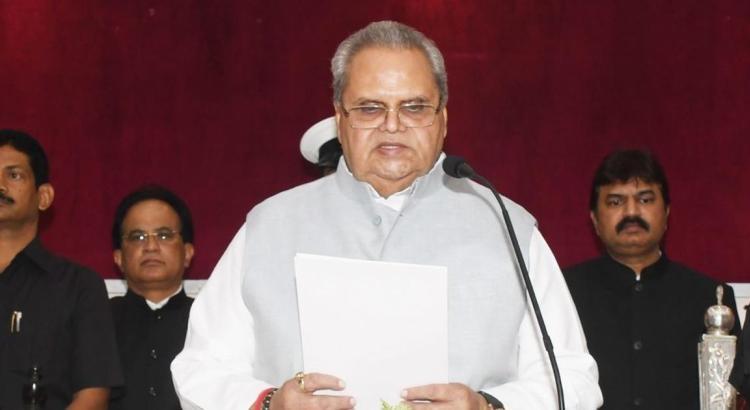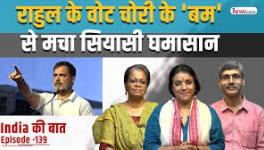Jammu and Kashmir: Undoing Autonomy, Starting Assimilation

Lies, fake news and misinformation prevail in contemporary India, where truth matters little, and make-believe thrives. Thus, denying agency to Kashmiris, dismissing them as Pakistan’s proxy, eulogising brutal operations against civilians and defending the ignominious role of Indian armed forces (well-documented by the UN Office of Human Rights Commission in its well-researched report recently) dominate Indian discourse. So, let us consider the implication of a new governor – Satya Paul Malik – in light of changes that have been effected by previous governor’s rule.
At first glance, it matters not who becomes governor in Jammu and Kashmir. But, J&K’s experience at the hands of different governors has varied, with just two governors standing out: BK Nehru, who thwarted then PM Indira Gandhi’s attempts to engineer rebellion within Farooq Abdullah-led Government in 1984, for which he was replaced by Jagmohan. And, NN Vohra, who demitted office of the governor yesterday after serving for more than a decade. The latter resisted moves by the BJP to put in place a quisling government after BJP-RSS combine engineered rebellion in PDP. He also placed on record, through a letter to the Union Home Minister Rajnath Singh, his considered opinion that Article 35A should not be dealt with until a popular government is in power in J&K.
However, there is a need for caution. The comparative role of the governors is only in relative terms because all governors who served in J&K, regardless of who they were, remained engaged in pushing for eroding constitutionally mandated special provisions for J&K and/or doing the Centre’s bidding. Even NN Vohra, in his brief spell of governor’s rule in 2015, while Mehbooba Mufti took her time to make up her mind before becoming the chief minister, saw attempts at encroachment on J&K’s land rights to set up, for e.g., ‘Sainik colonies’, which resulted in a spate of agitations throughout 2015.
The point is that governors have acted as a cat’s paw to enforce central ruling party’s will in J&K. With BJP-RSS now in the driver’s seat, we may be coming full circle to witness the demise of the last vestige of J&K’s special status, namely rights of permanent residents to employment in state government services, ownership of non-movable property, and to avail educational scholarship. With this, the likelihood of settlement of non-state subjects, under the name of creating a “nationalist” (read non-Muslim) majority in a sensitive state and ward off the so-called Pakistan led proxy war can gain ground.
It is worth recalling that governor’s rule can last for six months, and if the Constitutional machinery in the state is not restored before the expiry of this six month period, the provisions of the Article 356 of the Constitution can be extended to J&K, and President’s rule can be imposed.
It is worth noting that the hiatus between what people desire and what Indian opinion-makers debate is as old as the Indian republic itself. But, even by seven decade-old standards, the debate over J&K autonomy stands out.
BJP equates autonomy with secessionism; Congress keeps waffling, invoking the virtue of 1975 Beg-Parthasarthy agreement which spoke of constitutional provisions extended to J&K as being ‘unalterable’, but obliged the centre to ‘consider sympathetically’ a request by the state to rescind laws passed between 1953-74; while rest support autonomy without specifying what they mean by autonomy and how it is to be restored, when it has been more or less eroded.
It is known that ‘Sangh parivar’ and its cohorts play on fear and preju- dice to whip up passions. But, surprisingly, no one has spelled out how they intend to convince Kashmiris to settle for anything less than ‘azadi (freedom)’ when autonomy has lost its appeal and they are faced with a worse fate under BJP dispensation?
If we accept the GoI’s claim and the legality of Instrument of Accession, then the first Constitutional (Application to J&K) Order, 1950, dated January 26, 1950 provides the basis for the ‘special status’ promised to J&K. This was endorsed by the Delhi Agreement of 1952, and approved by the Parliament on August 7, 1952. Erosion of internal autonomy began under Bakshi Ghulam Mohammed in 1953, whose appointment is open to question. The State Autonomy Committee report in 2000, therefore, made a case for restoration of the pre-53 status. The 42 presidential orders, whose sanctity the union cabinet was most concerned about, violate the Delhi agreement of 1952. Indeed, some of the orders that the union cabinet is so keen to uphold reflect poorly on their collective wisdom. The SAC report points out that “Parliament had to amend the Constitution four times by the 59th, 64th, 67th and 68th Constitutional Amendment to extend President’s Rule imposed in Punjab on May 11, 1987. For the State of Jammu and Kashmir, the same result was accomplished by executive orders under Article 370.” The report shows how beginning ’53, “Article 370 has acquired a dangerously ambiguous aspect. Designed to protect the state’s autonomy, it has been used systematically to destroy it”. A glaring instance was cited in the report. On July 30, 1986, when the state was under central rule with Jagmohan as the governor, “the president made an Order under Article 370 extending to the State Article 249 of the Constitution in order to empower the parliament to legislate even on matter in the State List on the strength of a Rajya Sabha resolution”.
Against this background, appointment of Satya Pal Malik becomes significant. The last nail in J&K’s autonomy will be enabled by a more pliable governor. He can help pave the way for a new coalition led by BJP to come to power. Failing which, he could be trusted to carry out BJP’s agenda. Either way, J&K is in for regression. Meanwhile, 15 Corps Commander in charge of Kashmir has opined that while situation is stable, it remains fragile. Recall that 300-odd militants in Kashmir are keeping 600,000 armed personnel busy. If the number of home-grown militants rises to 500, then an unnamed official told Livemint in June that this would be a cause for “worry”.
Signs of where we are headed are also visible from the fact that the entire top echelon in administration, police, armed forces is made up of non-Muslims. Out of 73 IAS ranked, 21 are Muslims; out of 504 KAS rank officers, 235 are Muslims; and as for IPS, only 11 Muslims find place among 76. Armed forces fare no better in this case. Muslims are in any case poorly represented in army and central para military forces. For a Muslim-majority state, to have such a skewed representation of its actual demographics, is an indictment of India’s 70 years old control and administration of J&K.
It is evident that we Indians do not need enemies because our rulers are quite adept at taking us down a hole, if not downhill. However, it also means that the choice is getting narrowed between assimilation espoused by BJP, and described as “mainstreaming” of Kashmir, and right of self-determination which Kashmiris desire.
Get the latest reports & analysis with people's perspective on Protests, movements & deep analytical videos, discussions of the current affairs in your Telegram app. Subscribe to NewsClick's Telegram channel & get Real-Time updates on stories, as they get published on our website.
























